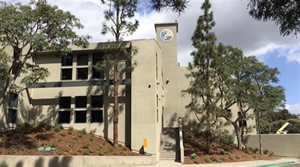California School Showcases Modernization
 Solana Highlands Elementary School in the Carmel Valley (California) recently enjoyed the completion of a full refresh and modernization. The structure has served students for 30 years, and with the passage of the Solana Beach School District’s Measure JJ School Bond, has been updated with modern HVAC, exterior renovations, and classroom spaces, among other elements.
Solana Highlands Elementary School in the Carmel Valley (California) recently enjoyed the completion of a full refresh and modernization. The structure has served students for 30 years, and with the passage of the Solana Beach School District’s Measure JJ School Bond, has been updated with modern HVAC, exterior renovations, and classroom spaces, among other elements.
Some of the additional steps taken include the removal of steps and lowering of fixtures to make the school more ADA-compliant. Students will also benefit from an updated outdoor lunch shelter and indoor service area, and the addition of astroturf to the outdoor play area. Staff will enjoy a larger teacher’s lounge and the addition of more storage space.
The project was started in June, and a majority of the work was completed by the time school began. An official ribbon-cutting celebration will take place in mid-January 2018, showcasing the updated space during an all-school assembly.